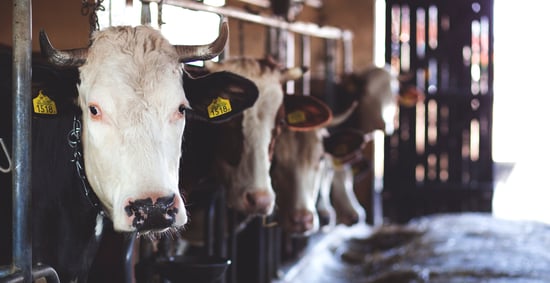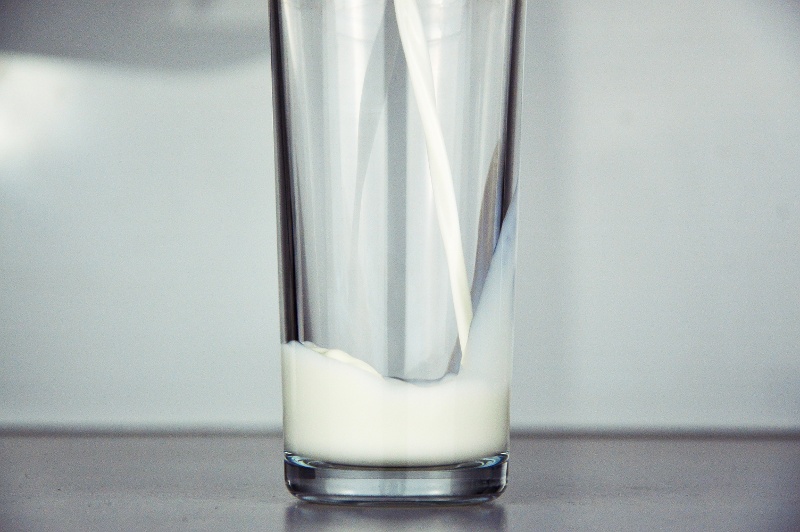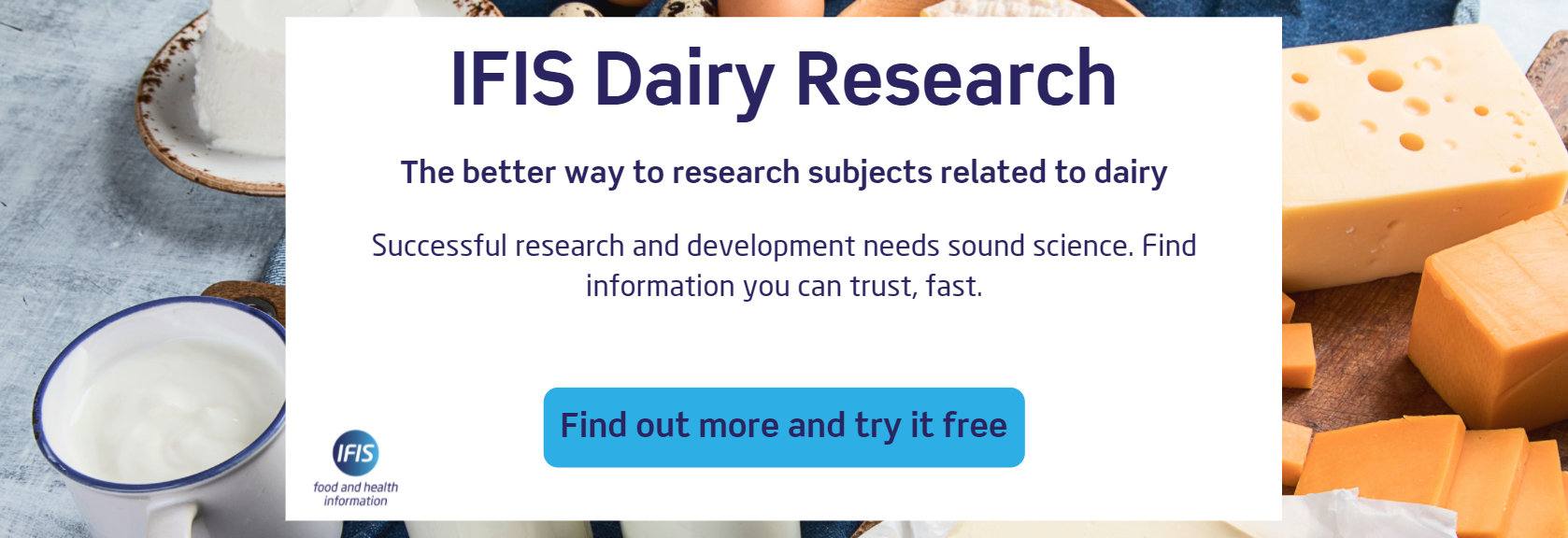Consumption of dairy products in the UK has declined by 30% over the last 20 years. Americans drink 37% less milk now than they did in the seventies. Milk alternatives, on the other hand, are becoming increasingly popular. So why is this happening?
How did milk drinking develop in the first place?
Milk consumption began with domestication of aurochs, precursors of modern domesticated cattle that used to roam over wide areas of Asia, Europe and North Africa. Aurochs subsequently evolved into the humped zebu (Bos indicus) and the hump-free European highland cattle (Bos taurus).
There is some debate about the identity and location of the first milk drinkers, but analysis of degraded fats on prehistoric pottery suggests that Neolithic farmers in Europe and Britain were milking cows 6000 years ago, and evidence points to the domestication of cattle in Mesopotamia as early as 8000 BCE. Stone carvings provide evidence that dairy activities were being carried out by the ancient Sumerians, Egyptians and Indians by 3000, 3100 and 2000 BC, respectively, whereas cows didn’t reach the Americas until they were shipped to Vera Cruz, Mexico, in 1525.
Who drinks the most milk?
Currently,more than 6 billion people worldwide consume milk and milk products. Overall, milk consumption is highest in developed countries, but developing countries are catching up. Per capita milk consumption is high in European countries, the US and Australia (more than 150 kg/year), moderate in India, most of the Near East and Latin America (30-150 kg/year) and low in most of East and Southeast Asia and Central Africa (less than 30 kg/year).
Types of cows’ milk available
A wide range of different types of cows’ milk are available for consumption. Fat content, processing and origin are the main sources of variation.
Fat content
Whole milk is largely unadulterated and has the highest fat content at approx. 3.5%. Semi-skimmed milk contains 1.5 to 1.8% fat, whereas skimmed milk has the lowest levels at 0.1%. Milk containing 1% fat has recently become popular, probably because it’s still low fat, but tastes better than skimmed milk.
Processing
Most milk consumed in western countries is pasteurized – this process involves heating and then rapidly cooling the milk to kill potentially harmful microorganisms. UHT milk is heated to at least 135°C before being packaged into sterile containers. It can then be stored for long periods at ambient temperatures. In addition, most milk is now homogenised to distribute the fat more evenly and prevent the formation of a creamy plug at the top of the container. Filtered milk can also be purchased. The filtration step removes spoilage bacteria and extends the shelf life of the milk.
Night milk
Obtained from cows at night, this milk is claimed to promote sleep due to its naturally high tryptophan and melatonin content.

Flavoured milk
Milk containing sugar, colorants and natural or artificial flavourings has many fans. Controversy exists about its consumption by children. Opponents argue that it should be banned because of its sugar content, but others believe it’s a good thing because it encourages children to drink milk. Chocolate, strawberry and banana are popular flavours in western countries, whereas spiced milk is sold in India.
a2 milkTM
As well as many other proteins, regular milk contains a mixture of A1 and A2 beta casein. During digestion, the A1 protein releases an opioid peptide, BCM-7, which is thought by some experts – but not others – to cause a range of adverse health effects.
A2 milk is a commercial product containing only the A2 protein. According to the company’s website, it may be more easily digestible than regular milk. The product was launched in Australia, but it is now available in other countries, such as the US, China and the UK. Some of the customer reviews on the website of a major UK supermarket seem to support the claims made for the milk
All over the world, people discover food research with FSTA. Find out more.
So why do people go dairy free?
Lactose intolerance and lactase persistence
Perhaps surprisingly, due to the widespread popularity of dairy products, most adults worldwide are unable to digest lactose in milk because they don’t produce the enzyme, lactase. The numbers of people affected by this range from 5% of the population in Northern Europe to more than 90% in some African and Asian countries.
The earliest users of milk learned how to reduce lactose levels in dairy products by converting milk into cheese or yoghurt by fermentation. However, the spread of dairying was assisted by the occurrence of a genetic mutation leading to lactase persistence, which co-evolved in the Balkans and Central Europe with the cultural practice of dairying in these areas, allowing Europeans to drink milk straight from the cow. This gene spread rapidly, mainly northwards across parts of Europe, possibly because it conferred survival advantages, but also because its emergence was followed by a massive population expansion. This means that most European lactase-persistent people carry the same version of the gene. Interestingly, however, lactase persistence is relatively rare in parts of southern Europe (less than 40% in Greece and Turkey, compared to over 90% in Britain and Scandinavia), because Neolithic farmers had settled there before the mutation appeared.
Milk allergy
This affects around 3-6% of infants and young children, but is rare in older children and adults. Most commonly, the allergy is caused by a response to the milk protein, alpha S1 casein, but other milk proteins can also act as allergens in susceptible individuals. Goat and ewe milk do not contain this protein, so can be consumed by many allergic individuals.
Personal preference
Some people believe that exploitation of animals for food production is cruel and immoral. Vegans, for example, don’t consume foods from animals, so all dairy products are excluded from their diet, and PETA (People for the Ethical Treatment of Animals) have a document listing 11 mainly health-based reasons to stop drinking cows’ milk. It has also been suggested that mammals are not really meant to consume milk from other mammals – we are the only species that does this. In addition, many individuals have found that their general health or particular symptoms, such as acne or gastrointestinal problems improve when they cut out milk, even though they might not have been diagnosed with milk intolerance or allergy.
Changes in eating habits
Some of the recent decrease in milk consumption in developed countries may be not be due to deliberate milk avoidance, but to other changes in eating habits. For example, many people now take a breakfast bar or a piece of fruit to work rather than sitting down and eating cereal in a bowl with milk. Conventional tea drinking with added milk has also become less common, and an expanding range of non-dairy beverage options is now available.

General health concerns
Some consumers, including a few celebrities, have come to believe that milk should be avoided for general health reasons. Fears about levels of fats, cholesterol, hormones and antibiotics may have started this health-related move away from milk.
What are the main alternatives to milk?
Soymilk has been available for a while, but consumers can now choose from several non-dairy milk alternatives made from other plant materials, such as almonds, cashew nuts, hazelnuts, coconut, hemp, flax, quinoa, oats, rice and potatoes. Almond milk is one of the most popular of these drinks – it can be purchased both with and without added sugar and in a range of flavours.
During 2015, US sales of almond milk increased by 7.8%, compared to a decrease in ordinary milk sales by 7%. Sales of almond milk ($894.6 million) were almost double those of its closest plant-based rival, soymilk ($297.7 million), and coconut and rice milks were next in line with sales of $61.3 and 18 million, respectively.
How milk-like is almond milk?
Almond milk and other milk alternatives look similar to traditional milk, are sold in similar cartons and are used by many consumers as milk substitutes. They can be added to tea or breakfast cereals, used as ingredients in cake recipes and drunk by the glassful. But is this comparison really valid? Should these products be described as milk at all?
For the purposes of this blog, I bought a carton of unsweetened, roasted almond milk for the first time. Its consistency was similar to that of milk, but, unlike milk, it was slightly beige in colour and, perhaps not surprisingly, it tasted of roasted almonds. Although I found this flavour to be very pleasant, it wasn’t milk-like in any way.
The FDA defines milk as something that comes from lactating cows. Nevertheless, in 2013, a US federal judge determined that the terms soy milk and almond milk are not deceptive, meaning that plant beverages can be sold there with the word milk on the carton. Cartons sold in the UK, on the other hand, do not include the word milk, nor does the website of Alpro, one of the main sellers of almond drinks in the UK. The website of a major UK supermarket, however, uses the term almond milk, but adds alternative to dairy, presumably to avoid accusations of misleading the public.
Nutrient composition
The energy content of the unsweetened almond milk in my fridge is 13 kcal/100 ml, which is lower than that of skim milk at 33 kcal/100 ml.
A comparison between the nutrient contents of almond milk and cows’ milk reveals similar levels of calcium and some vitamins, mainly because these are added to almond milk. Unsweetened almond milk has a total sugar content approaching zero, compared to values around 4.5 g/100 ml in dairy milk; however, sweetened almond milk contains approximately 3.0 g/100 ml. Dairy milk has a much higher protein content than almond milk. Similarly, whole milk contains much more fat, whereas skim contains less fat than almond milk.
Incidentally, almond milk has been criticized for its low almond content – usually around 2%, and some have described it as consisting mainly of water, a few almonds and added vitamins.
Milk and dairy products make a significant contribution to total intakes of iodine, a nutrient particularly important for young and pregnant women, whereas almond milk is low in iodine. Of course, this makes almond milk suitable for low iodine diets.
Is dairy avoidance a strategy for good health?
Clearly, lactose intolerant individuals and people with milk allergies can expect to see improvements in symptoms if they exclude dairy products from their diets. But what about everyone else? Does avoidance of dairy products lead to health benefits in the long term?

Evidence in favour of dairy avoidance
A study conducted in Sweden in 2014 found that risk of lung, breast and ovarian cancers was significantly reduced in 22 788 lactose intolerant individuals. As decreased risk was not observed in close family members, it was suggested that the reduced risk was due to dairy avoidance.
Although dairy-rich diets are often recommended to avoid osteoporotic fractures, another study, again conducted in Sweden questioned the validity of this advice. It found that high intakes of milk (but not other dairy products) led to increased risk of overall mortality in men and women and increased fracture risk in women.
A study conducted on a healthy adult population in Germany found that dairy product consumption led to increased plasma levels of trimethylamine-N-oxide (TNO), a metabolite known to be inversely associated with survival of patients with cardiovascular disease. An association was also observed between low grade inflammation and plasma levels of TNO.
Evidence against dairy avoidance
A recent review of a large number of studies into the health impacts of diets containing dairy foods concluded that they can provide a range of health benefits, particularly in relation to osteoporosis, sarcopenia, metabolic syndrome, cardiovascular disease, cognitive decline and digestive conditions. The review also analysed the macro- and micronutrient contents of dairy products in relation to recommended daily intakes and compared dietary guidelines for dairy intake in several different -mainly developed - countries. The analysis suggests that without consuming dairy products or calcium fortified products, most adults will not be able to meet the recommended guidelines for calcium intake.
Another recent review, focusing on cardiovascular disease, suggests that elimination of milk and dairy products (excluding butter) from the diet may not be the best strategy for risk reduction. Despite their saturated fat content, dairy products did not appear to exert a negative impact on risk and the study found increasing evidence that dairy product intake could reduce arterial stiffness and lower blood pressure.
A review of 9 prospective cohort studies including a total of 35 379 subjects and 12 cross-sectional studies including 37 706 subjects found an inverse relationship between dairy intake and metabolic syndrome.
Some studies have suggested that milk and dairy intake can increase risk of various cancers. However, a review published in 2014 found both beneficial and adverse effects. Overall, it concluded that moderate consumption does more good than harm and that risk would only be increased by excessive intake or consumption of dairy products contaminated with cancer causing chemicals.
Several studies have found evidence that dairy consumption can protect against obesity. For example, accumulated evidence from a review and meta-analysis of prospective cohort studies indicated that dairy consumption is inversely and longitudinally associated with risk of childhood overweight and obesity.
So what should I do?
The US Food and Drug Administration seems reluctant to permit health claims for dairy products; however, the nutrition guidelines issued in most countries advise moderate dairy intakes, and lower fat versions are often encouraged.
Many studies show correlations between dairy intake and various health effects. Overall, the balance appears to be in favour of positive rather than negative impacts. But what does this mean for any particular individual – should he or she consume dairy products or not?
It’s important to remember that correlation does not necessarily imply causation. For example, the observation that obesity levels are lower in children who drink more milk may have nothing at all to do with the milk itself - it might owe more to the fact that every time they choose a glass of milk, they are not choosing a sugary drink.
It’s difficult to translate research results into dietary guidelines that suit everybody. A quick glance at the studies cited here shows that the response of a particular individual to dairy intake can be influenced by a range of different factors – age, general health, genetic make-up and gender can all exert an impact, as can the amounts of dairy products consumed and the composition of those dairy products. Furthermore, our diets consist of a complex matrix of different compounds, many of which could be either good or bad for us, or both, depending on the amounts present. These compounds will probably interact with each other, affecting their ability to be absorbed in the gastrointestinal tract and modulating their separate impacts on health.
Perhaps consumption of moderate amounts of dairy foods won’t have much of a negative or positive impact on the general health of people who don’t suffer from particular health conditions. The same could probably be said of dairy avoidance. Either way, it has to be a personal decision.
Related Posts:



